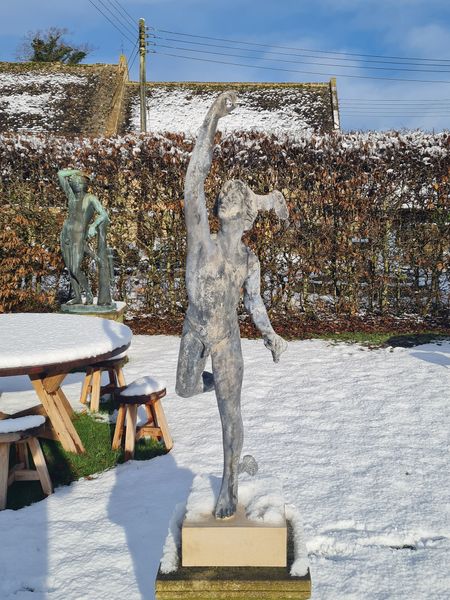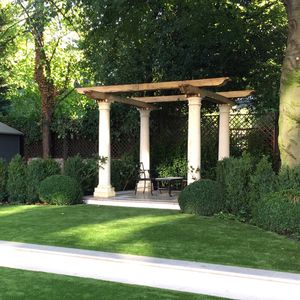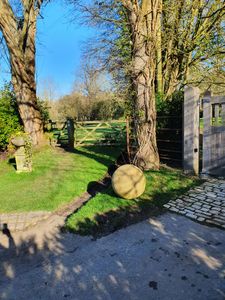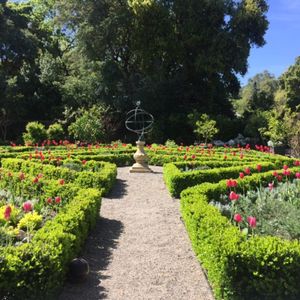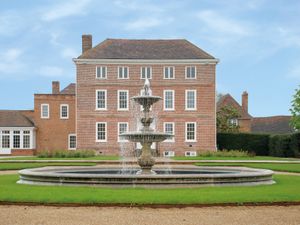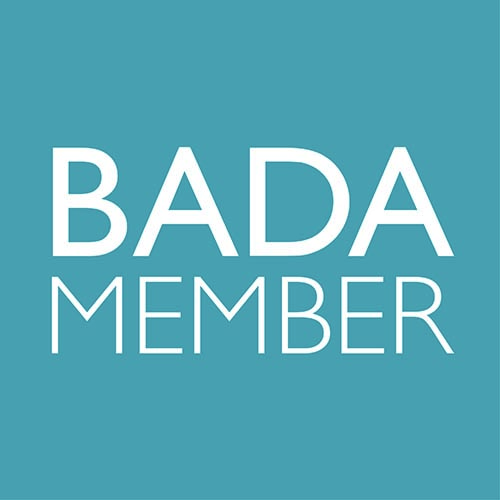Mercury in Flight after the model by Giambologna (1529–1608)
Mercury in Flight after the model by Giambologna (1529–1608)
Circa 1760
Stock Number: 15156/GSO
Height
125.00cm
[49.21 inches]
Width 32.00cm [12.60 inches]
Depth 42.00cm [16.54 inches]
Width 32.00cm [12.60 inches]
Depth 42.00cm [16.54 inches]
Sold
John Cheere 1709 - 1787
This Georgian lead figure of Mercury after the model by Giambologna 1529 – 1608 is a rare survivor of 18th century leadwork from the workshops of John Cheere 1709 - 1787, sometimes known as the Man at Hyde Park Corner – this being where is workshops were for fifty years...
It is of interest to note that Giambologna’s model (in lead) can be seen at Melbourne Hall-Derbyshire, Ham House,-Richmond and atop of the pediment of Dyrham Park-Gloucestershire with a similar smaller model at Tatton Park-Cheshire. There is also recorded in English Leadwork its Art and History by Lawrence Weaver a model at Holme Lacey - Hertfordshire and recently revealed another Mercury provenanced back to the 18th Century from Campsea Ash High House - Suffolk both having the distinctive sugar twist handle support for the Caducius – the winged staff with entwined snakes. As with all 18th century lead figures sensitive restoration has been required to aid the next two hundred and fifty years, namely in the support of the leg where previously frost freeze action on the iron core pin weakened the area.
Base height 12 cm
Base width 31 cm
Base depth 31 cm
This Georgian lead figure of Mercury after the model by Giambologna 1529 – 1608 is a rare survivor of 18th century leadwork from the workshops of John Cheere 1709 - 1787, sometimes known as the Man at Hyde Park Corner – this being where is workshops were for fifty years...
It is of interest to note that Giambologna’s model (in lead) can be seen at Melbourne Hall-Derbyshire, Ham House,-Richmond and atop of the pediment of Dyrham Park-Gloucestershire with a similar smaller model at Tatton Park-Cheshire. There is also recorded in English Leadwork its Art and History by Lawrence Weaver a model at Holme Lacey - Hertfordshire and recently revealed another Mercury provenanced back to the 18th Century from Campsea Ash High House - Suffolk both having the distinctive sugar twist handle support for the Caducius – the winged staff with entwined snakes. As with all 18th century lead figures sensitive restoration has been required to aid the next two hundred and fifty years, namely in the support of the leg where previously frost freeze action on the iron core pin weakened the area.
Base height 12 cm
Base width 31 cm
Base depth 31 cm











